In 2024 alone, U.S. consumers lost $12.5 billion to phone-related fraud, an all-time high, according to the Federal Trade Commission (FTC). A growing portion of these scams now involve toll-free numbers, which were once seen as symbols of corporate trust. But that perception is precisely what scammers exploit. By hijacking or spoofing 1-800 numbers, fraudsters create an illusion of legitimacy that lowers a person’s guard at the worst possible moment.
The shift from traditional robocalls to more sophisticated impersonation techniques means toll-free abuse is no longer limited to outdated tech support scams. We’re seeing full-scale fraud ecosystems, from spoofed financial hotlines to international call-back traps, built entirely around the perceived credibility of toll-free prefixes. These operations mimic real IVRs, reroute calls to high-charge lines, or extract sensitive data under the guise of “customer support.”
So, can toll-free numbers be used for scams? Absolutely. And the danger lies not in the number itself, but in the infrastructure around it, and the trust people continue to place in it. In this article, we’ll break down how toll-free numbers are exploited, how to recognize the red flags, and what individuals and businesses can do to stay protected.
Let’s start with the root of the problem: why scammers are still clinging to toll-free numbers in 2025.
Key Takeaways
- Toll-free numbers can and are exploited by scammers, via spoofing, impersonation, fake IVRs, and premium-rate traps, capitalizing on the public’s lingering trust in 800/888 prefixes.
- Common fraud tactics include caller ID spoofing, fake financial hotlines, and voice cloning; U.S. consumers lost $12.5 billion to phone scams in 2024 alone.
- Red flags include urgency scripts, no callback options, poor audio quality, and requests for sensitive data; verification via public registries like SMS/800 or official websites is critical.
- DIDlogic mitigates toll-free abuse at the infrastructure level by vetting business use-cases, monitoring usage patterns, and refusing blind number provisioning.
- Effective protection requires a combination of regulatory frameworks (like STIR/SHAKEN), proactive verification, behavioral red flag awareness, and smart routing tools.
Why Scammers Still Use Toll-Free Numbers in 2025
Toll-free numbers haven’t lost their psychological edge. Despite years of warnings about phone scams, many people still associate prefixes like 800 or 888 with trust, reliability, and corporate accountability. Scammers know this, and they use it as a foot in the door. The toll-free label becomes a kind of disguise, helping them bypass suspicion before any red flags even appear.
The Persistent Trust Factor Behind 1-800 and Similar Prefixes
For decades, 1-800 numbers symbolized legitimacy. They were expensive to set up, used by banks, airlines, and enterprises, and instantly recognizable to consumers. That legacy still lingers. According to a 2023 Hiya Voice Trends report, more than 60% of users said they were more likely to answer calls from toll-free numbers than unfamiliar local ones. Even among digital natives, the perception of “official business” attached to toll-free prefixes remains stubbornly high.
Scammers exploit this exact bias. They know a 1-800 or 888 number doesn’t just look official, it feels official. That makes it far easier to run a convincing phishing attempt, especially when paired with common corporate scripts like “We’ve detected suspicious activity on your account.”
Realities of Number Spoofing and the Weak Link in Caller Trust
But what’s displayed on a screen isn’t always what’s calling. Spoofing, the practice of falsifying caller ID, allows attackers to present any number they want, including toll-free ones. The number might appear to come from your bank or phone provider, but it’s just a mask.
Caller ID spoofing remains alarmingly widespread. The FCC estimates over 1 billion spoofed calls occur each month in the U.S. alone. Outside the U.S., defenses are weaker. While the STIR/SHAKEN framework (which authenticates caller identity) is mandated across American carriers, it hasn’t been globally adopted. Many VoIP-based calls, especially international ones, still bypass these checks altogether.
So even if the number looks clean, the trust layer behind it is often missing.
The Mechanics of Toll-Free Number Exploitation
Knowing that spoofed toll-free numbers can bypass skepticism, scammers layer on more tactics to strengthen the illusion. Their goal isn’t just to make the first impression, they want to keep victims engaged long enough to extract value, whether that’s money, credentials, or both.
Spoofing, Impersonation, and Pretexting: A Breakdown
These three tactics often appear together, but they’re not the same.
- Spoofing manipulates the number itself.
- Impersonation involves faking the identity behind the number, like posing as a telecom rep or bank agent.
- Pretexting creates a scenario that justifies the call, like asking for “security verification” after flagging a fake login attempt.
In telecom-specific scams, fraudsters frequently pose as mobile carriers claiming SIM swap activity or account breaches. They’ll spoof a toll-free number, impersonate a support agent, and pretext a fake emergency, all in the same call. Victims are then guided to reveal PINs, passcodes, or even initiate number ports.
Toll-Free as a Gateway to Premium Rate Traps
The scam doesn’t always stop at the toll-free line. In some cases, victims are funneled from an initial free call into a premium-rate environment.
For example, a fraud ring might set up a toll-free number that plays an IVR recording saying, “To speak to an agent, please call 1-900-XXX-XXXX.” That next number connects to a ghost PBX (a fake private branch exchange system), charging several dollars per minute. Victims think they’re resolving an issue—when in reality, they’re being billed or drained by the minute.
Interpol flagged several such cases in 2023, linking cross-border toll-free bait lines to premium-rate destinations run by Eastern European fraud networks.
Data Harvesting via Fake Customer Service Hotlines
Another tactic looks harmless on the surface: a toll-free number listed as a “support line” for a major brand. These are often planted on fake websites, phishing emails, or typo-squatted URLs. When someone calls, they hear a standard IVR asking them to enter their account number or card PIN “to verify your identity.”
The system doesn’t route the call, it just records the input.
These fake IVRs mimic real corporate menus almost perfectly. Attackers use them to harvest sensitive data at scale. Unlike social engineering, this method feels automated and trustworthy to the victim, which lowers resistance and accelerates compliance.
Data-Backed Scam Profiles: What Fraudulent Toll-Free Calls Look Like
Scam calls don’t follow a single script, but they do follow patterns. By analyzing reports from consumer watchdogs, telecom providers, and cybersecurity teams, a clear picture emerges of how fraudulent toll-free calls behave. From the moment the call connects, scammers rely on predictable tactics to create urgency, manipulate perception, and extract information. Recognizing these traits early can help stop an attack before it escalates.
Behavioral and Technical Markers of Scam Calls
Most toll-free scam calls share a mix of psychological manipulation and technical red flags. While no single indicator guarantees fraud, multiple signs in combination are a strong warning.
Watch for these:
- Urgency tactics: “Your account will be suspended in 30 minutes” or “You must act immediately.”
- No ability to call back: Scammers often block callbacks or redirect to unrelated departments.
- Inconsistent caller details: Names, departments, or case numbers change mid-call.
- Unusual audio quality: Echo, background noise, or lag often suggest VoIP manipulation.
- Lack of verification: They avoid answering questions or validating their identity.
- AI voice cloning: An emerging threat. Scammers use cloned voices to mimic actual banks or support reps, especially in longer interactions.
Top Reported Toll-Free Scam Types in the Past Year
Some scams occur so frequently, they’ve become templates. Below are the most common toll-free call scams reported across North America in the last 12 months:
- IRS debt collection scams: Victims receive a toll-free call claiming unpaid taxes and legal action. Callers use aggressive language and threaten arrest unless payment is made via prepaid cards or wire transfer.
- Bank fraud alerts: A spoofed 1-800 number claims to be the victim’s bank security team. The caller reports suspicious activity and prompts the user to “confirm” account numbers or login credentials.
- Fake tech support (Microsoft/Apple): Victims are told their device has malware. They’re then guided to install remote-access tools or redirected to high-charge lines for “advanced support.”
These scams evolve constantly, but the structure remains familiar: borrowed legitimacy, forced urgency, and information extraction.
How to Verify Toll-Free Numbers Before You Engage
The safest move isn’t answering, it’s verifying. Before offering any information, it’s crucial to confirm the legitimacy of the number calling you. Toll-free numbers may look real, but the actual ownership behind them can be obscured or manipulated. Fortunately, there are reliable ways to verify their origin before engaging.
Tools and Tactics for Validation
Here’s a short checklist to confirm whether a toll-free number is safe to engage:
- Check the company’s official website. Reputable businesses list their customer service numbers on official domains, never rely on what’s provided in an unsolicited message.
- Use the U.S. SMS/800 directory. This official registry shows which business owns a toll-free number.
- Do a reverse lookup. Tools like 800notes.com or Truecaller can reveal crowd-sourced reports or scam flags tied to a number.
- Call back using a known number. Don’t use redial. Instead, go to the company’s public website and call their published contact line to verify the original outreach.
Red Flags When Verifying a Toll-Free Number
Even if a number appears professional, these signs often indicate it’s not legitimate:
- No public ownership listed: If the SMS/800 database shows no business owner, proceed with caution.
- Conflicting information on forums: Scam reporting sites might link the number to multiple, unrelated entities.
- Avoidance of verification: If the caller resists being questioned or dismisses your attempts to verify their identity, hang up.
Scammers depend on passive targets. Verification, even basic, is often enough to stop them cold.
DIDlogic’s Role in Protecting the Toll-Free Ecosystem
While much of the focus around scam prevention centers on user behavior and government regulation, infrastructure providers play a quiet but critical role in keeping the ecosystem clean. DIDlogic, as a global telecom provider, takes an infrastructure-first approach to blocking abuse before it ever reaches the end user. That means vetting numbers before activation, continuously monitoring usage, and enforcing strict provisioning protocols that many downstream carriers don’t see.
Behind the Scenes: How DIDlogic Screens Toll-Free Allocations
Before a toll-free number goes live through DIDlogic, it passes through a multi-step identity verification process. This isn’t just a compliance checkbox, it’s core to preventing bad actors from accessing telecom infrastructure in the first place.
Clients requesting toll-free numbers must provide verifiable business documentation, use-case details, and expected traffic patterns. Numbers are never allocated blindly or automatically. DIDlogic evaluates the request to ensure it aligns with legitimate commercial activity and complies with regional telecom rules.
By focusing on who the number is provisioned to, and how it will be used, DIDlogic helps prevent abuse from the infrastructure layer, where most fraud detection fails to look.
Regulations and Tech Defenses: What’s Being Done?
Even with provider-level defenses in place, systemic protection requires wider coordination. That includes regulatory frameworks, caller authentication protocols, and evolving industry responses. While some efforts have made meaningful progress, global enforcement still varies, and technical gaps remain. Understanding what’s currently in place, and where it falls short, is key to evaluating risk.
STIR/SHAKEN and the Limits of Current Caller Authentication
STIR/SHAKEN is the caller ID authentication framework developed to combat spoofing. It works by digitally signing the calling number at the point of origin and verifying that signature at the destination. If the number’s origin can’t be confirmed, the system can flag or reject the call.
The protocol is now mandatory for most carriers in the U.S., following enforcement by the Federal Communications Commission (FCC). But the system has clear limits:
- It doesn’t apply to calls originating outside of the U.S.
- Many VoIP carriers (especially international) fall outside enforcement scope
- Even within the U.S., smaller providers have received extended compliance deadlines
As a result, spoofed toll-free numbers can still bypass authentication layers, especially when routed through global VoIP infrastructure. STIR/SHAKEN helps, but it’s not a full shield.
How Global Telcos and Regulators Are Responding
Regulators and telecom providers are not standing still. In the U.S., both the FCC and Federal Trade Commission (FTC) have expanded enforcement and fines for illegal robocalls and call spoofing. The FCC has also begun partnering with international regulators to increase pressure on cross-border scam networks.
On the industry side, large telcos are investing in call analytics, AI-powered anomaly detection, and shared blacklists. Some are piloting voice biometric tools for inbound call verification, especially in financial services.
Yet despite these efforts, enforcement and adoption vary drastically between regions. Until authentication tools like STIR/SHAKEN reach global scale, and infrastructure providers across borders enforce real screening, bad actors will continue to find open doors.
Practical Countermeasures for Businesses and Individuals
Stopping toll-free number abuse isn’t only the job of telecom providers or regulators. Businesses and individuals both play a role in reducing exposure to scams. Whether you’re managing hundreds of customer interactions daily or just answering your phone at home, the right habits and tools can make you much harder to target.
Enterprise-Level Call Authentication Strategies
For companies, especially those that rely on outbound or inbound calling, proactive authentication isn’t optional, it’s brand protection. Here are high-level practices every enterprise should implement:
- Whitelisting trusted numbers: Maintain and publish a verified list of toll-free numbers used for customer contact. Encourage users to call back through official channels.
- Deploying call filtering software: Use enterprise-grade solutions that apply behavioral analytics to detect suspicious inbound or outbound call activity.
- Using DIDlogic’s provisioning alerts: DIDlogic clients can take advantage of built-in notifications that flag abnormal traffic spikes or usage shifts in real time, helping teams react before issues escalate.
These practices don’t just block scams, they build customer trust through transparency and control.
Personal Strategies to Avoid Toll-Free Scams
Individuals don’t need complex tools to stay safe, just better habits. The key is staying alert and using small friction points to slow down potential fraud attempts.
- Never trust unknown inbound calls, even if the number looks familiar or toll-free.
- Let voicemail screen first. If it’s legitimate, the caller will leave a message with a callback reference.
- Check for contextual inconsistency. Did your bank “call” you when you don’t even have an account there? Did the tech support line you just called ask for payment before even explaining the issue?
These patterns signal manipulation. When something feels off, it usually is.
Frequently Asked Questions (Real Data-Driven Concerns)
How can I check if a toll-free number is legitimate?
- Use 800notes.com or Truecaller to scan for scam reports.
- Search for the number on the company’s official website.
- Use the SMS/800 directory for U.S. toll-free ownership verification.
Why doesn’t blocking scam numbers work long term?
- Scammers rotate through spoofed numbers constantly. A blocklist is reactive and rarely catches the next attempt.
What should I do if I gave information to a scammer?
- Report the call to the FTC or FCC.
- Contact your bank or provider immediately.
- Freeze credit reports if sensitive identity info was shared.
Final Thoughts: Keep the Infrastructure Clean
Toll-free numbers aren’t the problem, unchecked access and misplaced trust are. As scammers get more creative, protecting voice infrastructure demands collective action. Carriers must screen who they serve. Businesses must educate their users. Regulators must pressure bad actors. And individuals must stay skeptical when trust is being borrowed from a number on a screen.
DIDlogic is committed to reinforcing that trust. From secure provisioning to real-time abuse detection, the system is designed to support safe, legitimate voice communication, without compromise.
If you’re looking to build a fraud-resistant telecom stack or just want to understand the safeguards in place, explore DIDlogic’s Guides or reach out directly to discuss secure toll-free provisioning.










